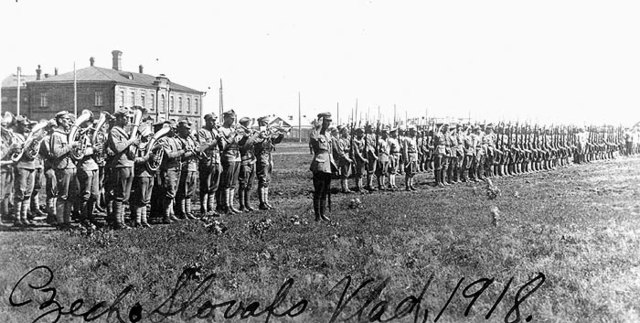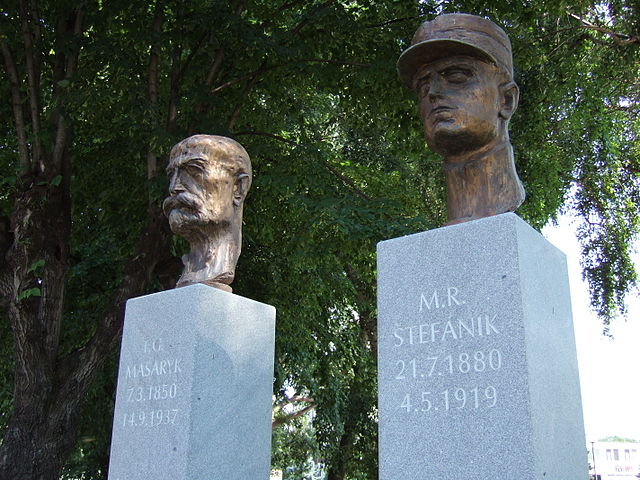Occupation of Czechoslovakia (1938–1945)
The military occupation of Czechoslovakia by Nazi Germany began with the German annexation of the Sudetenland in 1938, continued with the creation of the Protectorate of Bohemia and Moravia, and by the end of 1944 extended to all parts of Czechoslovakia.
Adolf Hitler at Prague Castle
From left to right: Chamberlain, Daladier, Hitler, Mussolini, and Ciano pictured before signing the Munich Agreement, which gave the Sudetenland to Germany
Edvard Beneš, the second President of Czechoslovakia and leader of the Czechoslovak government-in-exile
Ethnic Germans in Saaz, Sudetenland, greet German soldiers with the Nazi salute, 1938.
Czechoslovakia was a landlocked state in Central Europe, created in 1918, when it declared its independence from Austria-Hungary. In 1938, after the Munich Agreement, the Sudetenland became part of Nazi Germany, while the country lost further territories to Hungary and Poland. Between 1939 and 1945, the state ceased to exist, as Slovakia proclaimed its independence and Carpathian Ruthenia became part of Hungary, while the German Protectorate of Bohemia and Moravia was proclaimed in the remainder of the Czech Lands. In 1939, after the outbreak of World War II, former Czechoslovak President Edvard Beneš formed a government-in-exile and sought recognition from the Allies.
Czechoslovak troops in Vladivostok (1918)
Czechoslovak declaration of independence rally in Prague on Wenceslas Square, 28 October 1918
A monument to Tomáš Garrigue Masaryk and Milan Štefánik—both key figures in early Czechoslovakia
The car in which Reinhard Heydrich was fatally injured in 1942








